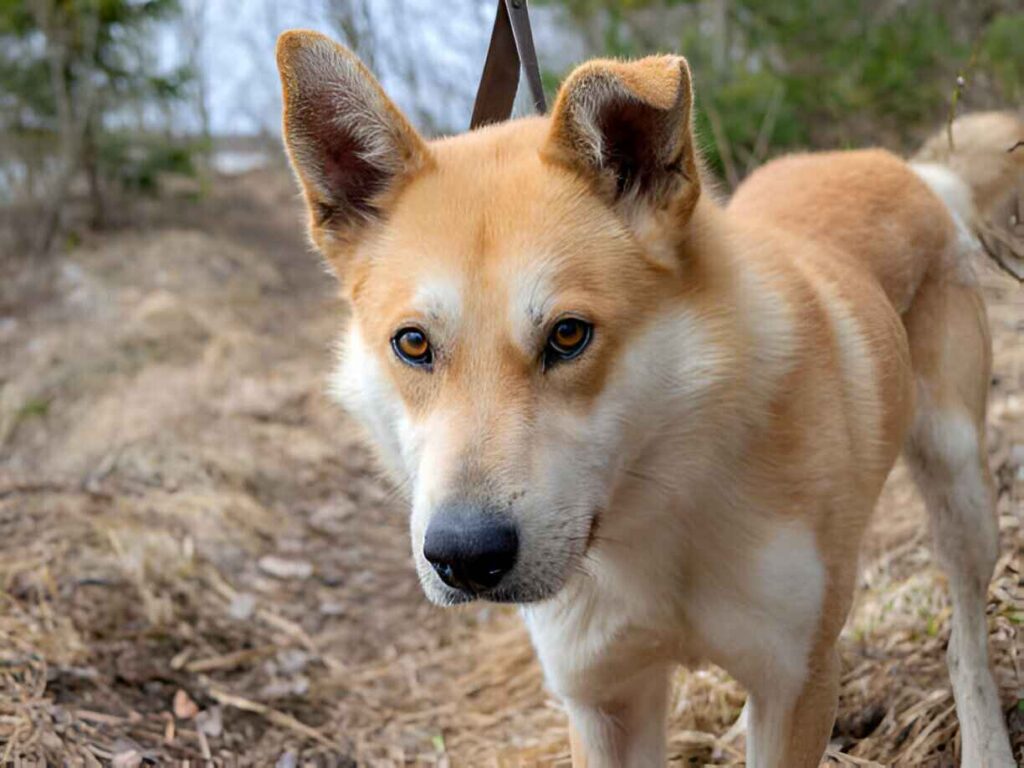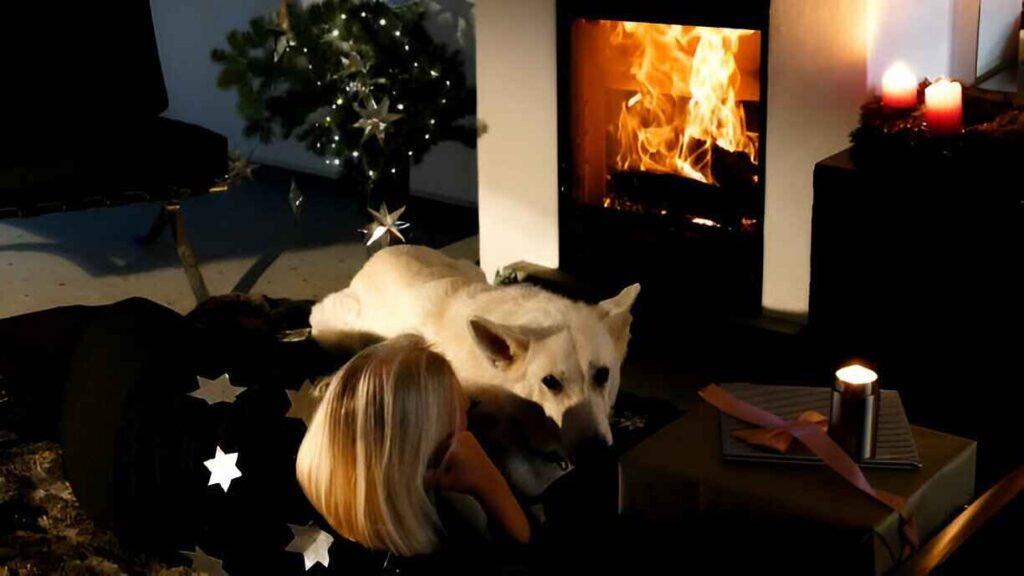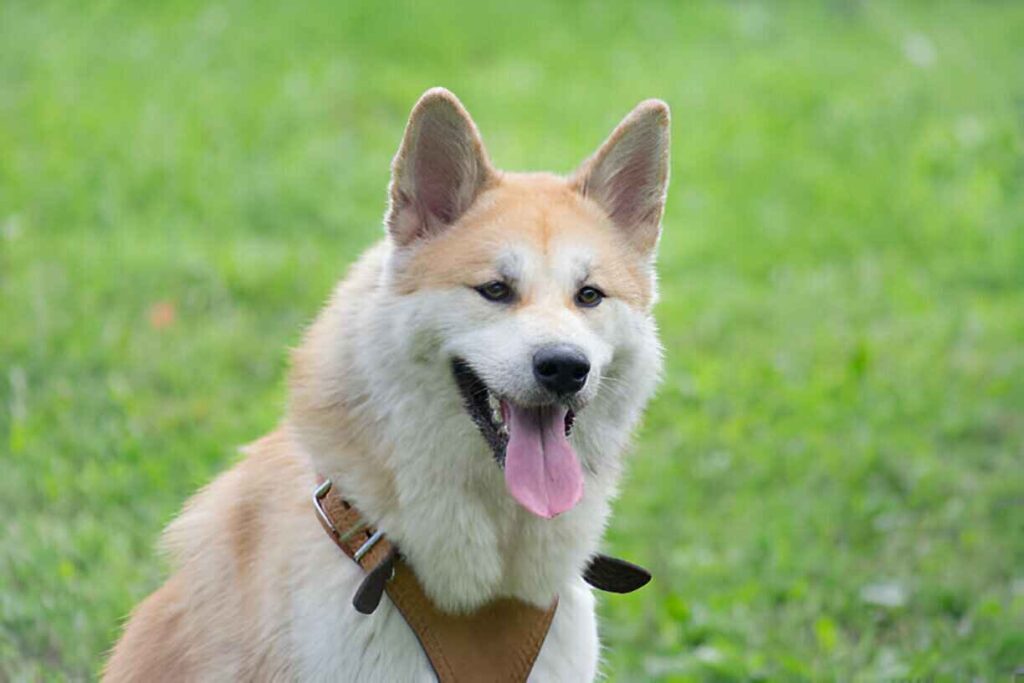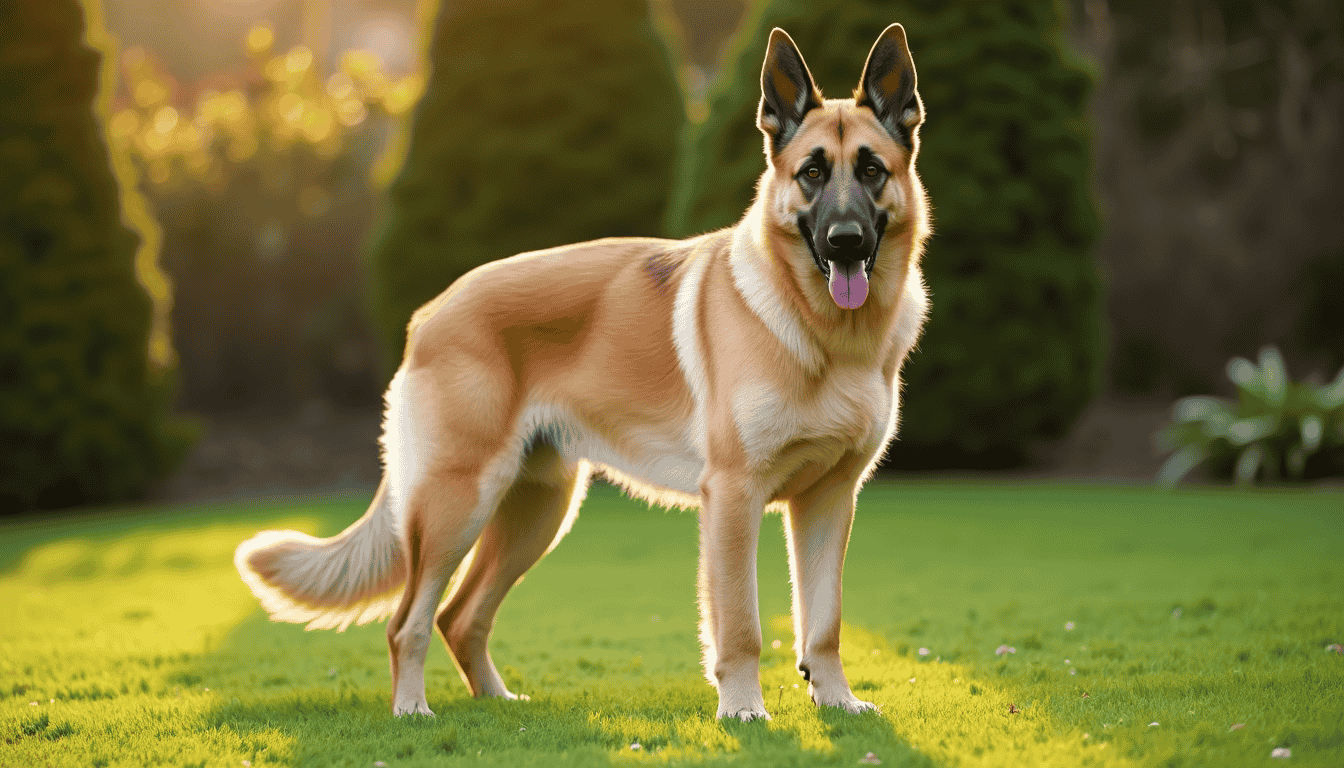Blonde German Shepherds are very rare dogs that you might see just once in your life. These beautiful dogs get their unique coat color from a recessive gene. Both parents must carry this gene to produce blonde puppies. Their light-colored fur creates a striking look with black pigmentation on their nose, paw pads, and other areas.
You should know that blonde German Shepherd puppies cost between $1,000 and $2,500 due to their limited numbers and specialized breeding. These dogs come from the same bloodline as traditional German Shepherds. This holds true whether you want a golden blonde, long-haired, or sable variant. They match standard German Shepherds in size at 22-26 inches tall and 50-90 pounds. Dog shows don’t accept them because of their coat color. Many blonde puppies’ coats change as they grow older and often turn into lighter tan or cream shades.
This piece covers everything about these magnificent dogs in 2025. You’ll learn about their unique genetics and care needs. The information will help you decide if this rare breed would make the right companion for your family.
What Makes a German Shepherd ‘Blonde’?
A German Shepherd’s blonde coat comes from a unique genetic mix that creates a beautiful look. These light-colored beauties stand out from the traditional black and tan GSDs with their coat colors ranging from pale cream to rich golden hues. People can’t help but notice them wherever they go.
How is the blonde coat different from white or cream
The sort of thing I love about blonde German Shepherds is the genetics behind their coat. Their unique color comes from a recessive gene called the “e” gene that both parents must pass down. This gene changes how eumelanin works, which gives dogs their dark pigmentation. The “B” gene also plays a role by controlling how much black pigment shows up in their coat.
Blonde GSDs differ from white German Shepherds, who have a different recessive gene that masks their true color. The AKC doesn’t recognize white GSDs, but blonde shepherds fit into what breeders call “black and cream” coloration – a lighter version of the black and tan pattern.
Blonde German Shepherds keep normal pigmentation in their eyes, nose, and paws, with colors from tan to black. This makes them different from albinos that don’t have any melanin and show pink noses, paws, and eyes.
Common myths about blonde German Shepherds
People believe quite a few wrong things about these golden beauties. Many think blonde German Shepherds must be mixed breeds. The truth is they’re purebred dogs with a rare color variation from specific genetic combinations.
Some people think they’re just albinos. But blonde GSDs have melanin – it just shows up as their light coat color instead of being completely absent.
You might hear that light-colored German Shepherds aren’t as healthy or capable as darker ones. That’s not true at all. Blonde GSDs are just as healthy and skilled as traditional ones. Their coat color doesn’t affect their intelligence, loyalty, or ability to work.
These dogs have the same temperament and structure as other German Shepherds. Dog shows might not recognize them, but that doesn’t make them any less beautiful or capable as companions.
How to Identify a True Blonde German Shepherd

Image Source: Alamy
A true blonde German Shepherd has specific physical characteristics that make them stand out. These rare beauties look different from other light-colored shepherds because of their distinctive traits.
Physical traits to look for
The pigmentation helps you identify a blonde German Shepherd quickly. True blondes have distinct black pigmentation on their noses, paw pads, lips, and ears. Their light coat creates a striking contrast with this black pigmentation.
Blonde German Shepherds match the standard GSD size measurements. Males weigh 65-90 pounds and reach 24-26 inches tall at the shoulder. Females are smaller at 50-70 pounds and 22-24 inches in height.
You’ll notice their coat ranges from pale cream to rich gold, with possible darker markings on the face and back. The dog’s eyes can be any shade from light amber to dark brown that complements their coat perfectly.
Blonde vs. blonde sable vs. golden blonde
The coat patterns help you distinguish these variations easily. Standard blonde German Shepherds show consistent light coloration throughout their body. Blonde sables display a unique “banding” pattern where each hair strand contains multiple colors. These hairs might show 2-3 different shades including brown, black, silver, and red.
Golden blonde German Shepherds have a richer, more vibrant yellow tone than their paler blonde cousins. The sable pattern creates an interesting transformation – puppies look quite dark at birth, then become much lighter as they lose their puppy coat, before their adult coat gradually darkens.
Signs your dog may be a mix
These key indicators will help you spot if your blonde shepherd might be mixed:
- The ears look different – purebred GSDs have erect, pointed ears that stand upright
- The body shape doesn’t match a standard GSD’s square, athletic build
- The coat feels different from the typical medium-length double coat
- The nose and paws lack black pigmentation
A DNA test will give you the most accurate answer about your dog’s breed makeup. This becomes especially helpful because many light-colored shepherd-type dogs look similar at first glance.
Caring for a Blonde German Shepherd

Blonde German Shepherds need extra care because of their light-colored coat and specific health requirements. These stunning dogs thrive with regular care routines that keep them looking and feeling their best.
Grooming tips for light-colored coats
These dogs shed all year round, with two heavy shedding periods that last 10 days or more when they blow their undercoats. You should brush them twice a week normally and step up to daily brushing during shedding seasons. An undercoat rake works best and won’t damage their protective double coat when removing loose fur.
Your blonde GSD needs a bath every 6-10 weeks with gentle shampoos made for double-coated breeds. Bathing them too often can strip away natural oils from their coat. Never shave or cut your German Shepherd’s coat – it naturally shields them from both hot and cold weather.
Blonde coats stay healthy and shiny when dogs get omega-3 fatty acids in their diet. Light-colored dogs also need extra protection from the sun since their fur has less natural pigmentation.
Exercise and mental stimulation needs
German Shepherds need at least 90 minutes of daily exercise. This should mix up high-energy activities like walks, runs, and playtime. Puppies should follow the five-minute rule – they need formal exercise for five minutes per month of age to protect their joints.
Mental workouts matter just as much as physical exercise. Daily brain games, puzzle toys, scent work, and training keep them from getting bored and destructive. These smart dogs love having “jobs” that challenge their problem-solving skills.
Health concerns to watch for
Blonde German Shepherds share health issues with standard GSDs. About 20% get hip and elbow dysplasia[172]. They can also develop degenerative myelopathy (t), exocrine pancreatic insufficiency, and various cancers.
Their light coats make them more prone to skin sensitivities from sun exposure. Watch their time in direct sunlight and protect them during the hottest parts of the day. With good care, these dogs usually live 7-10 years, though some reach 15 when well cared for.
Bringing One Home: Buying or Adopting

Getting a blonde German Shepherd needs careful thought about where you’ll find your new family member. Your puppy’s source will substantially affect its health and your experience as a pet parent.
Finding a responsible breeder
Good breeders put their dogs’ well-being ahead of trendy coat colors. Look for breeders who conduct health screenings and share genetic testing results for common German Shepherd conditions. The best breeders will show you documentation that proves their breeding dogs were tested for hip and elbow dysplasia, pancreatic acinar atrophy, and degenerative myelopathy.
Stay away from breeders who only care about producing blonde coats without paying attention to health and temperament. The most ethical breeders stick to a code of ethics and stay open about possible health issues. The American Kennel Club (AKC) Marketplace or Good Dog certification program are great places to start your search.
What to expect when adopting
Adoption can be a rewarding path to pet ownership. Finding a blonde German Shepherd in shelters might take time, but rescue organizations sometimes have these beautiful dogs ready for new homes.
The adoption process involves thorough background checks. You can expect home visits and temperament assessments that help ensure you and your new pet are a perfect match. Rescue dogs might come with unknown histories, so they need extra patience during adjustment. Most dogs show their true personalities after spending 30-60 days in their new home.
Cost range and what it has
Blonde German Shepherd puppies cost between $1,000 and $2,500 because they’re rare. Adoption fees are lower, usually $250 to $350.
Your first year with a blonde German Shepherd will need about $3,500 for vaccinations, food, grooming, and pet insurance. Yearly costs after that run from $500 to $1,500. Throughout your dog’s 9-13 year life, you might spend between $47,000 and $99,000 if you add services like professional walking and boarding.
Conclusion
Blonde German Shepherds are without doubt among the most striking variants of this beloved breed. These magnificent dogs maintain all the intelligence, loyalty, and working capabilities of standard German Shepherds. Their light-colored coats make them stand out. Their unique appearance comes from specific recessive genes that both parents must carry. This genetic combination makes them rare and special.
These dogs need the same steadfast dedication to exercise and mental stimulation as any German Shepherd. Their lighter appearance means they need extra attention to coat care and sun protection. Your blonde companion will thrive with regular brushing, proper nutrition, and careful sun exposure.
These rare beauties cost between $1,000 and $2,500 from reputable breeders. Some rescue organizations have these dogs accessible to more people at substantially lower adoption fees. The lifetime investment runs from $47,000 to $99,000 when you add up all care expenses.
A blonde German Shepherd’s stunning looks shouldn’t be the only reason to bring one home. These remarkable dogs need owners who value their complete package. Their working heritage, exercise requirements, and what it all means for their health matter just as much. A blonde German Shepherd becomes your most devoted companion with proper care, training, and love. They bring joy and protection to your home for years.
FAQs
Q1. How much does a blonde German Shepherd typically cost?
Blonde German Shepherd puppies usually range from $1,000 to $2,500 when purchased from reputable breeders. This price reflects their rarity and specialized breeding. Adoption fees from rescue organizations are generally lower, typically between $250 and $350.
Q2. Are blonde German Shepherds rare?
Yes, blonde German Shepherds are extremely rare. Their unique coat color results from specific recessive genes that both parents must carry, making them a special and uncommon sight among German Shepherds.
Q3. How do I identify a true blonde German Shepherd?
A true blonde German Shepherd maintains distinct black pigmentation on their nose, paw pads, lips, and ears, contrasting with their light coat. They have the same size and build as standard German Shepherds, with coat colors ranging from pale cream to rich gold.
Q4. What special care do blonde German Shepherds require?
Blonde German Shepherds need regular brushing, especially during shedding seasons. They require protection from excessive sun exposure due to their lighter coats. Like all German Shepherds, they need at least 90 minutes of daily exercise and mental stimulation to stay healthy and happy.
Q5. Do blonde German Shepherds have different temperaments or health issues compared to standard German Shepherds?
Blonde German Shepherds have the same temperament and general health profile as standard German Shepherds. They are intelligent, loyal, and capable working dogs. However, they may have increased skin sensitivities due to their lighter coats, requiring extra attention to sun protection.
